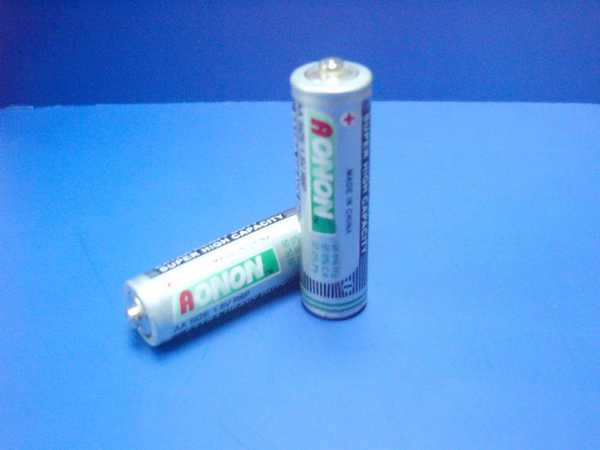Common problems in the use and maintenance of lithium batteries
Russia and Ukraine is an important exporters of oil, natural gas, metals, fertilizers, rare gases and other industrial raw materials. Affected by the further intensification of the tension of the war, the global market has become more worried about the supply of the lithium-ion battery, and panic spreads in the futures market. Prices of commodities such as aluminum and nickel are at recent highs on concerns that supplies will fall. Russia accounts for 49 percent of global exports of nickel, 42 percent of palladium, 26 percent of aluminum and 13 percent of platinum, and is a significant exporter of steel and copper. Palladium is an important metal for sensors and memory. In addition, Russia is the world's largest exporter of nitrogen fertilizer, the second largest exporter of potash fertilizer, and the third-largest exporter of phosphate fertilizer. Ukraine is also an important producer of nitrogen fertilizer. Russia's natural gas supply also has a significant impact on the global fertilizer industry and lithium-ion battery industry, especially in Europe. The price of the lithium-ion battery will also fluctuate to some extent. Russia carries out crude gas separation, and Ukraine is responsible for refined exports. Ukraine supplies 70% of the world's neon, 40% of krypton and 30% of xenon. These three gases are the materials used to make chips.
1. Basic concepts of lithium-ion battery:
The lithium-ion battery has a nominal voltage of 3.7V (3.6V) and a charge cut-off voltage of 4.2V (4.1V, which has different designs according to the brand of the battery). (The specification for lithium-ion batteries is: lithium-ion secondary batteries
2. Requirements for charging lithium-ion battery (GB/T182872000 specification)
First of all, constant current charging, that is, the current is constant, and the battery voltage gradually increases with the charging process. When the battery terminal voltage reaches 4.2V (4.1V), the constant current charging is changed to constant voltage charging; the voltage is constant, and the current is based on the battery. The saturation level gradually decreases as the charging process continues, and when it decreases to 0.01C, the charging is considered to be terminated. (C is a way of expressing the battery's nominal capacity against the current. For example, if the battery has a capacity of 1000mAh, 1C is the charging current of 1000mA. Note that it is me instead of mAh, and 0.01C is 10mA.) Of course, the standard representation is 0.01 C5A, simplified here.

3. Why do you think 0.01C is the end of charging?
This is stipulated by the national standard GB/T18287-2000, and it is also discussed. In the past, everyone generally ended with 20mA. The industry standard YD/T998-1999 of the Ministry of Posts and Telecommunications also stipulates that no matter how large the battery capacity is, the stop current is 20mA. The 0.01C specified by the national standard helps charge more fully, which is beneficial for the manufacturer to pass the appraisal. In addition, the national standard stipulates that the charging time should not exceed 8 hours; that is to say, even if it has not reached 0.01C, the charging is considered to be over after 8 hours. (Batteries with good quality should reach 0.01C within 8 hours, for batteries with poor quality, it is meaningless to wait).
4. How to distinguish whether the battery is 4.1V or 4.2V?
Consumers are indistinguishable; it depends on the product specification of the cell manufacturer. Some brands of batteries are 4.1V and 4.2V universal, such as A&TB (Toshiba); domestic manufacturers are 4.2V, but there are exceptions, such as Tianjin Lishen is 4.1V (but it is currently 4.2V).
High-quality graphite supplier
Luoyang Moon & Star New Energy Technology Co., LTD, founded on October 17, 2008, is a high-tech enterprise committed to developing, producing, processing, selling, and technical services of lithium-ion battery anode materials. After more than 10 years of development, the company has gradually developed into a diversified product structure with natural graphite, artificial graphite, composite graphite, intermediate phase, and other negative materials (silicon-carbon materials, etc.). The products are widely used in high-end lithium-ion digital power and energy storage batteries. If you are looking for Lithium battery anode material, click on the needed products and send us an inquiry:sales@graphite-corp.com.
Inflationary pressures on Canadians continue to rise. The consumer-price index rose 6.7% in March from a year earlier, the biggest increase since January 1991, according to the latest figures from Statistics Canada.
On a month-on-month basis, Canada's CPI rose 1.4 percent in March, also accelerating from February's 1.0 percent rise.
Prices in the eight major sectors covered by the statistics continued to rise. The uptrend comes against the backdrop of continued price pressures in the Canadian housing market, widespread supply chain constraints, and geopolitical conflicts, according to CBC. A variety of factors have affected energy, commodity, and agricultural markets. Meanwhile, Canada's employment picture continued to improve in March, with the unemployment rate falling to a record low and the average hourly earnings of employees rising.
Excluding gasoline, Canada's CPI rose 5.5 percent year on year in March. It is also the highest since comparable data began in 1999.
The widespread supply chain constraints and geopolitical conflicts are expected to continue to affect the prices of the lithium-ion battery.
Inquiry us
NEXT NEWS